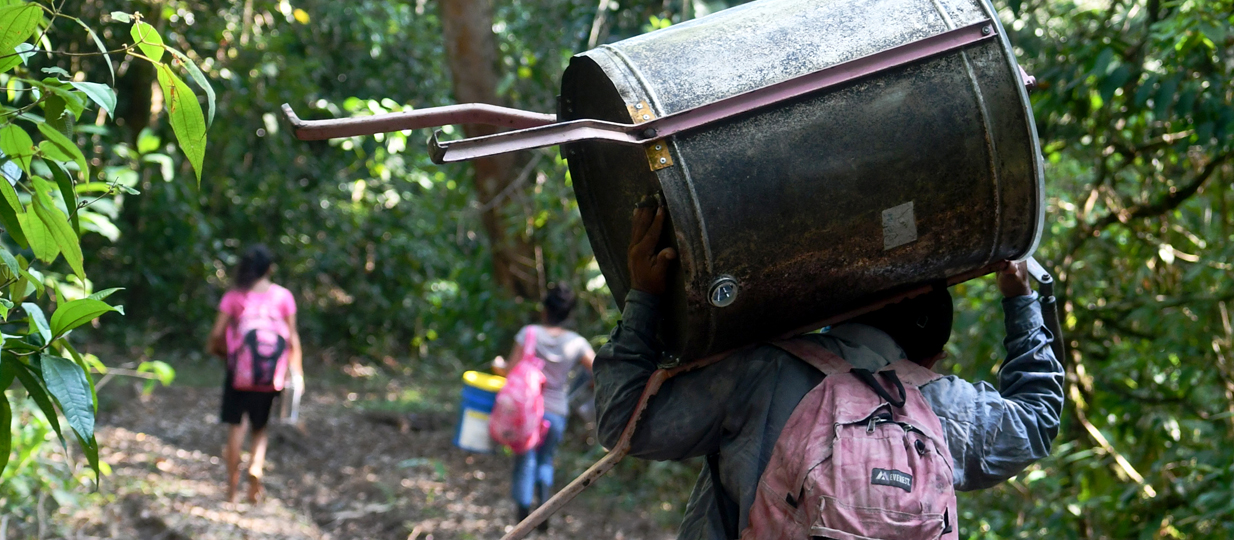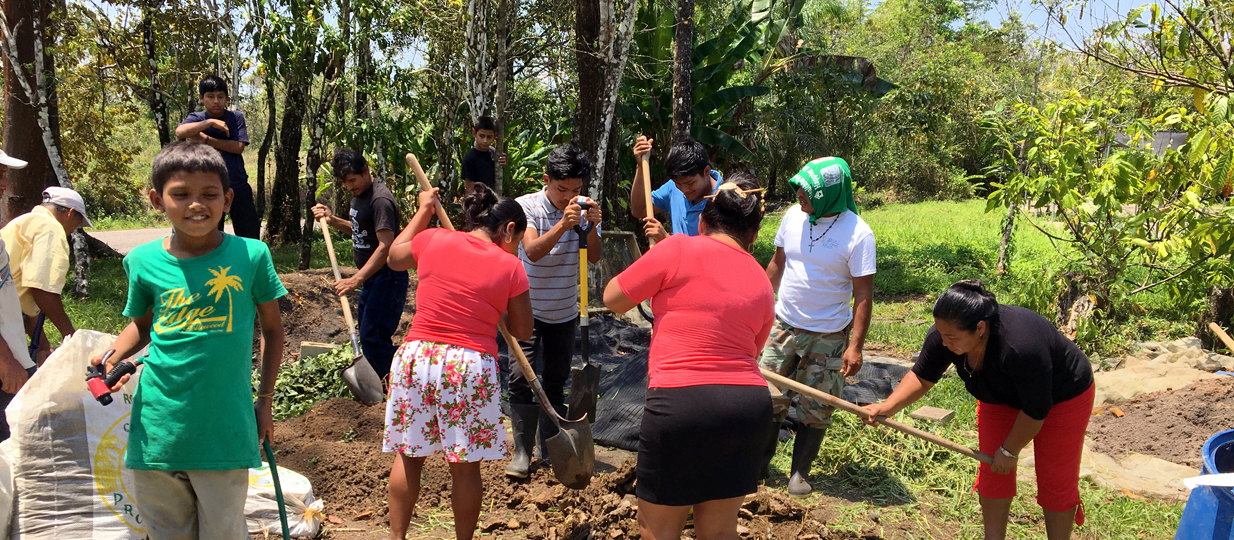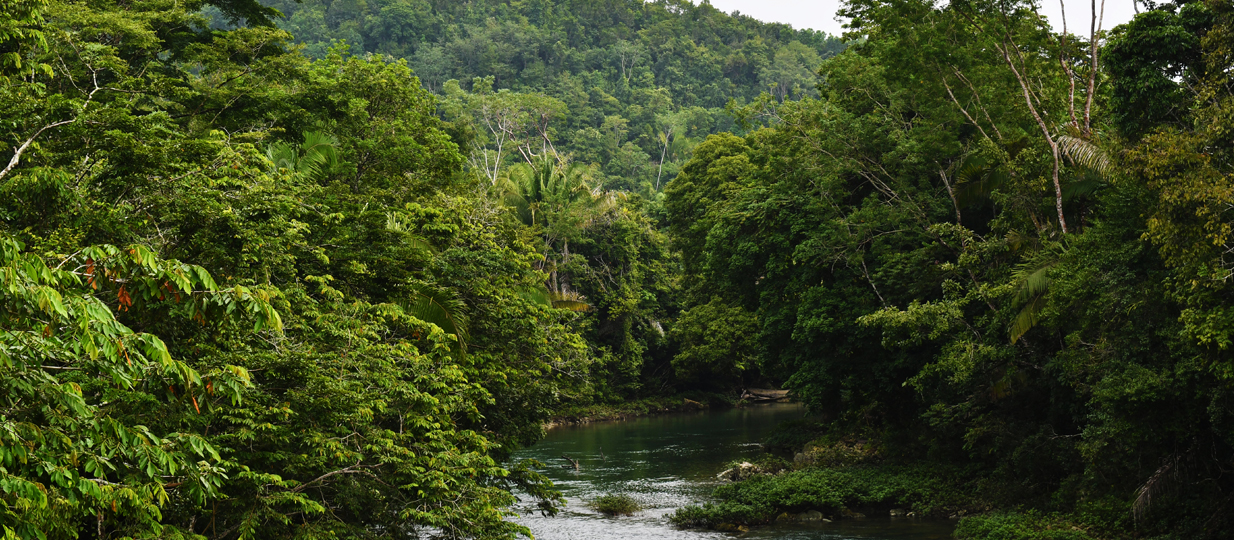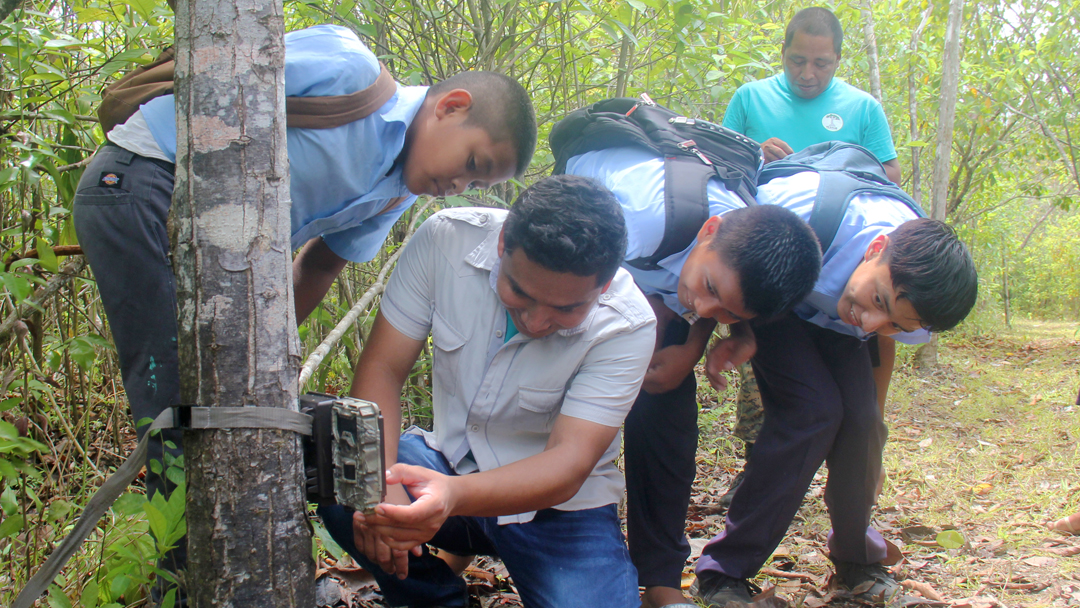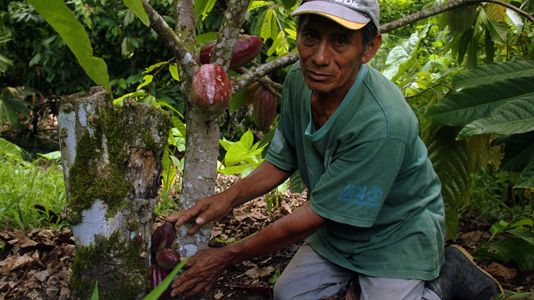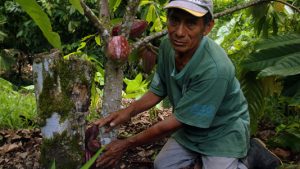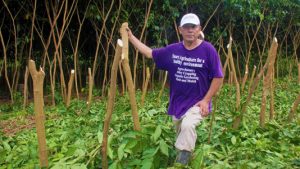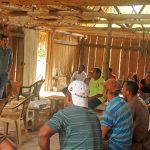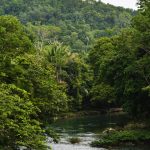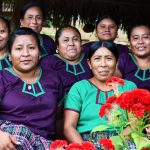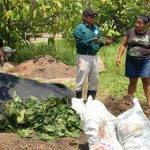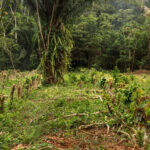We are monitoring whether wildlife are present in Belize’s first agroforestry concession, which is part of our long-term biodiversity monitoring.
Maya Mountain North Forest Reserve is one of Belize’s Key Biodiversity Areas situated between Cockscomb Basin Wildlife Sanctuary and Bladen Nature Reserve creating a corridor of high diversity. Its diversity richness and proximity to forest dependent communities has subjected it to illegal logging, poaching and incursions. Hence, the Belize Forest Department established co-management of the reserve with Ya’axché since 2015, in an effort to restore degraded areas and to ensure responsible and legal community access to the multi-use forest reserve.
As a forest reserve, sustainable extraction of forest products are permissible and have allowed the establishment of Belize’s first agroforestry concession. The agroforestry concession allows for forest preservation and strengthens the livelihoods of the communities.
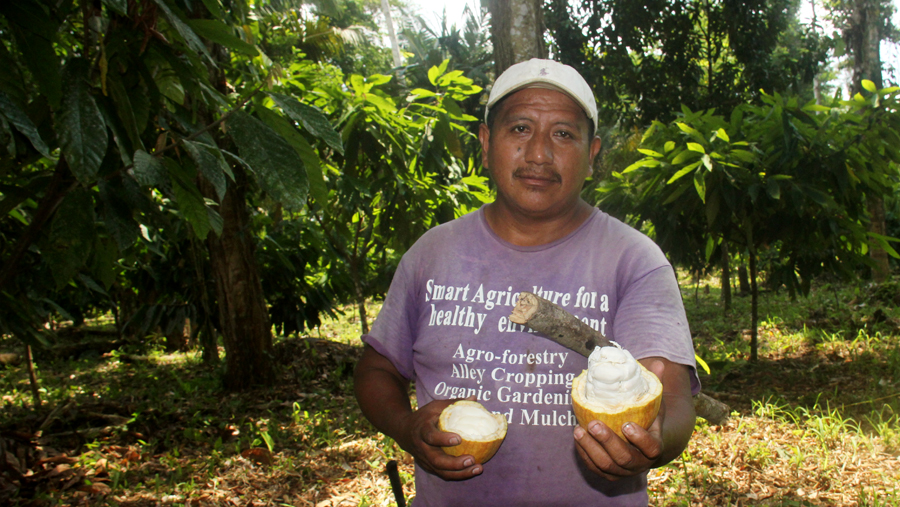
Since 2014, 31 farmers have been growing cacao in the agroforestry concession and as of March 2019, over 9,000 pounds of wet cacao beans have been harvested. We wanted to verify whether growing cacao, a sustainable farming practice, is supporting wildlife. As part of Ya’axché’s ongoing, long-term biodiversity monitoring program, wildlife camera trap monitoring is used to collect data to assess the effects of climate-smart agricultural practices on biodiversity abundance. These cameras capture images that allow us to observe and record the presence of wildlife in and around the reserve.
We excitedly share some of our photos captured by camera traps deployed in Maya Mountain North Forest Reserve.
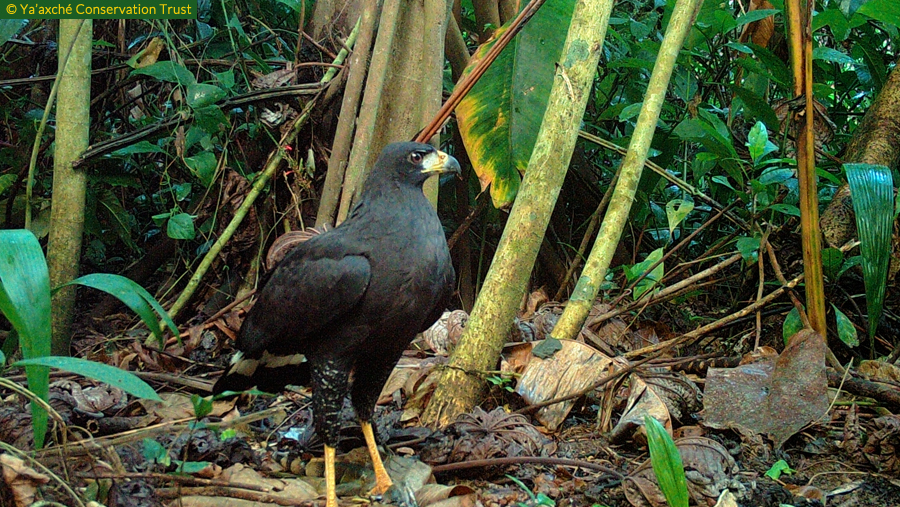
The great black hawk (Buteogallus urubitinga) is a large black-plumage raptor with a strong, hooked, black bill, yellow cere, and long yellow tarsi. Its wings have whitish bases on the first three primaries, and indistinct grey barring across flight feathers. Its medium size tail has white half tail basal and upper-tail coverts. Its legs and talons are yellow in color.
Its habitat is widespread in the Neo-tropics, especially near water sources. The great black hawk primarily feeds on small mammals, birds, fish, crab, reptiles, and amphibians. This bird often hunts on the ground by perching and dropping on active prey.
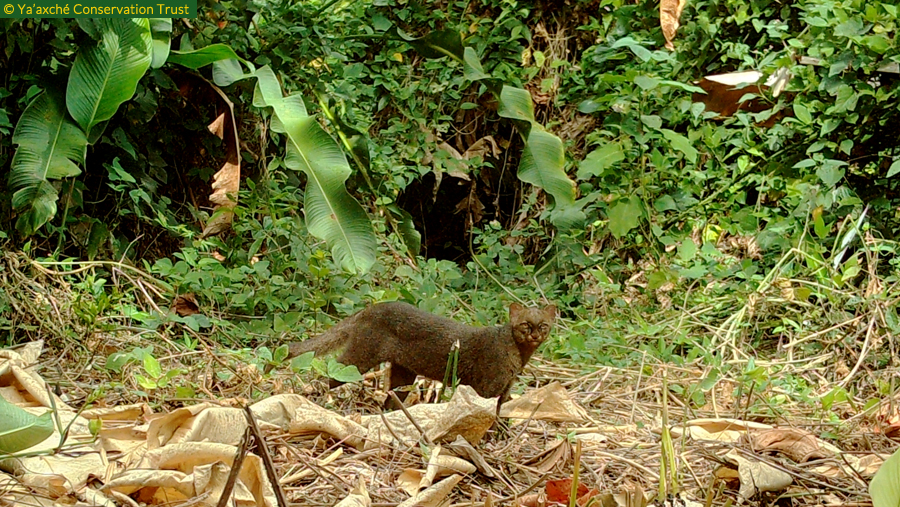
The jaguarundi (Herpailurus yagouaroundi), also known as halari (Creole) and cho jix (Q’eqchi’ Maya), is a solitary cat bearing the resemblance of the weasel family because of its small flattened head and rounded ears. The jaguarundi is the second smallest wild cat in Belize. It has three distinct colour morphs – black, dark gray and red – depending on habitat. The jaguarundi can grow up to 2-4 feet long and 1-2 feet tall. It can weigh between 12-18 pounds. Its average life span is 15-22 years.
The jaguarundi’s habitat ranges from dense forests, to riparian areas and drier scrub areas, making it vulnerable to deforestation and habitat loss. It is a carnivore; it primarily feeds on small mammals, birds, lizards, frogs and fish. The jaguarundi hunts mostly on the ground, both at night and day. It has as many as 13 separate vocalizations including whistles, purrs, yaps, bird-like chirps or even a scream.
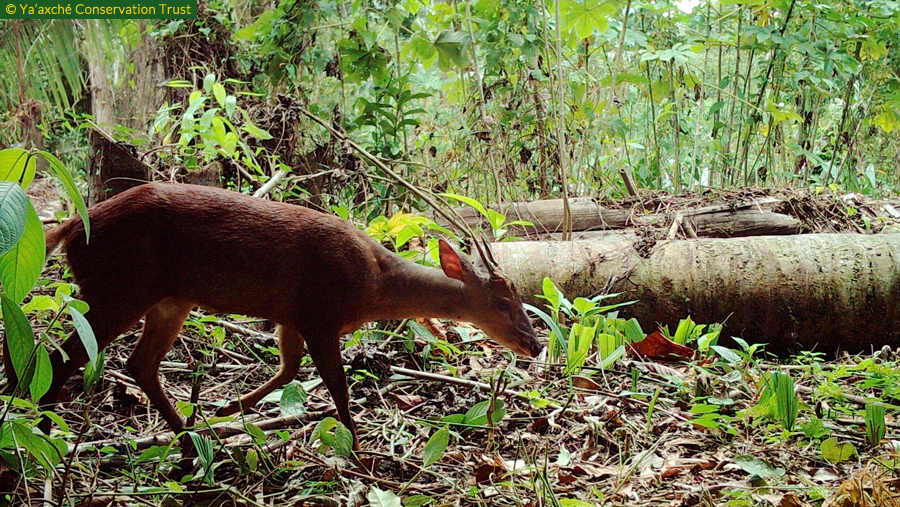
The red brocket deer (Mazama americana), also known as antelope (Creole) or kej (Q’eqchi’ Maya), is a solitary and diurnal mammal. It is 4-5 feet long from head to tail, 2-3 feet tall and can weigh 44-121 pounds. Its head and neck are light grayish-brown, while the tail, inner ear, throat, and inner thighs are white, and the rest of their body is reddish brown. Males are larger and have short, sharp antlers to protect against predators.
Red brocket deers can be found in Central and South America, inclusive of Trinidad. They live in dense tropical forests with closed canopies and prefer either moist or really dry climates, near fresh water bodies. Their average life span is 7-16 years.
Their diet includes grass, tender green roots, fruits and seeds. At night, red brockets forage in agricultural fields, on the edge of forests, or in gardens. To avoid predators they will freeze and spring through vegetation or swim across water.
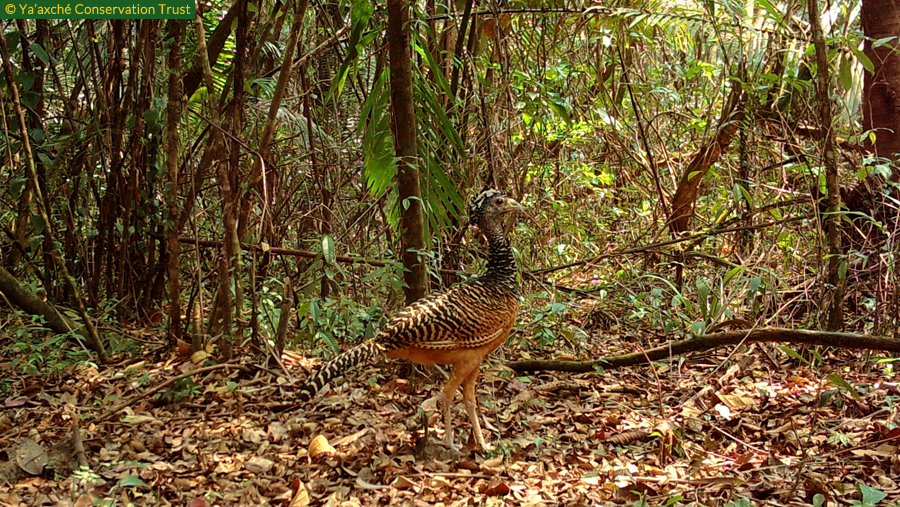
The great curassow (Crax rubra), also known as chakmut (Q’eqchi’ Maya), has a crown of forward-curling feathers on its head, long tail and is 3 feet tall. Males are black with white under parts, a shaggy crest and a bright yellow knob on the bill. Females vary in color, usually reddish brown or blackish.
The great curassow can be found from Mexico to Ecuador. Its has been recorded to live up to 24 years. The great curassow forages across the forest floor or in the upper levels of the tree canopy, mostly on fruits but also on small invertebrates and vertebrates.
Great curassows are monogamous and travel in pairs or in small groups of which the male leads his family. They have several calls that range from low frequency booms to high-pitched yips; males whistle when there is a sign of danger.
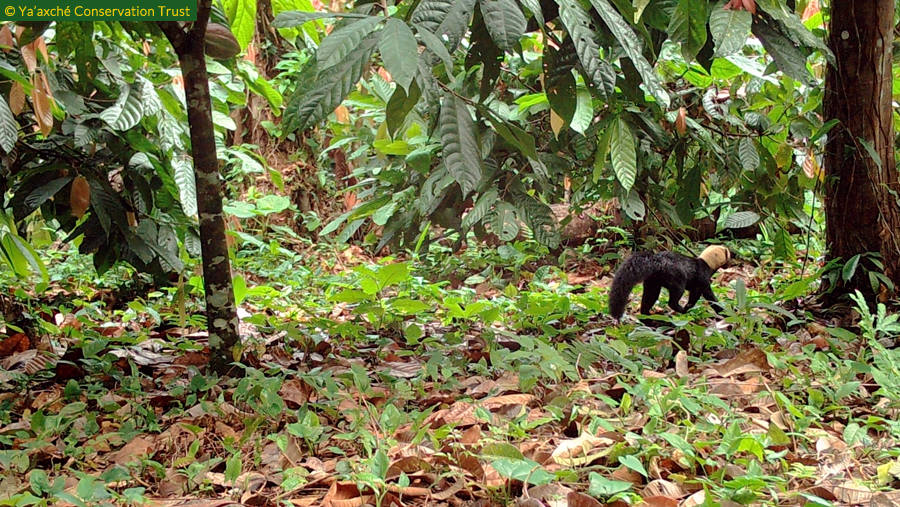
The tayra (Eira barbara), also known as bush dog (Creole) or saqol (Q’eqchi’ Maya), is a solitary and diurnal mammal member of the weasel family. Tayras vary in color depending on its habitat. In general they have short black fur with a lighter head and diamond shaped patch on their throat and chest usually white. Their body length is 3-5 feet long and weight is 9-11 pounds.
Their Neo-tropical forest habitat is widespread from Mexico to South America. They will eat almost anything. It has been recorded that they can live up to 22 years. They are very fast runners and good climbers. When alarmed, they use their tail to create bouncing movements with their back arched and tail along the ground; they also move their heads in an undulating snakelike to determine scents or sights; and, they produce short barking call and may snort, growl, and even spit.
Wildlife diversity is an indicator of healthy forests. These wildlife images captured in the agroforestry concession at Maya Mountain North Forest Reserve are a positive indicator of the hospitable ecosystems supported by sustainable, climate-smart agricultural practices. The images are still coming in and we amazed by the diversity captured by our field cameras. It also shows that the agroforestry farms are enriching the land and creating connections between the forest, farm lands and communities within the Maya Golden Landscape.

